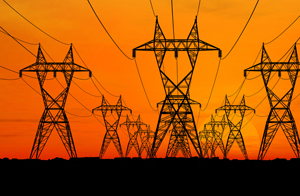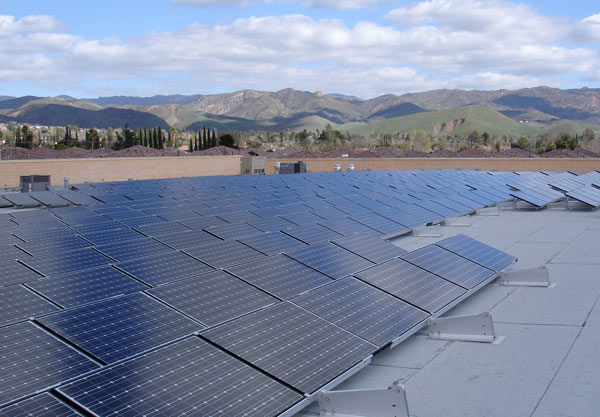
I received my second request for a post! This time the submitter asks for information about electricity, transmission, and how intermittent renewables like wind and solar fit in.
So, the first question:
1. Electricity, for the most part needs needs to be consumed the instant it is produced?
Yes. Storage of electricity can be done in batteries, or with pumped-water energy storage, but these are all just ways of being able to make electricity at some moment later in time. In short, electricity, once produced, is either used immediately or stored. Massive storage is not practical at the moment, so it's used.
2. Wind or Solar electricity is essentially in addition or parallel to the base load, and do little to lessen the use of coal, NG, or nuclear derived electricity!
This bring up an interesting point about electricity production. In the US, we have 60hz electricity. It's made 60hz by the generator design (in the US, Europe and other places use 50Hz power). Thermal power plants, those that burn things to produce power, rely on spinning a turbine in a magnetic field to produce power. The magnetic field is part of the turbine design, and is too complicated for this post to discuss in further detail. The turbine is spun because water, turned into steam by the heat from burning things or other reactions (coal, natural gas, or even heat from fission), expands rapidly from water to steam. It creates pressure, and then pushes through the turbines to spin them. The turbines spin at the exact rate they need to in order to produce 60hz electricity.
If we produce slightly too much electricity, the turbines start spinning slightly faster. To keep the grid at the right speed, electricity production is reduced at plants. If there is too little electricity, the turbines will slow down, and we'll fall below 60hz. There is a constant dance of the power plants and the electricity users to make everything balance. It's mostly automated, and happens very quickly.
What does this have to do with solar and wind? A lot. Solar and wind power output can be predicted, but not perfectly. If we want to maintain a perfect 60hz grid, we need to be able to adjust for wind and solar output. Because, again, electricity is used when it is made, and not stored. Coal and nuclear power plants aren't great at changing how much electricity they produce in a short timescale, so if we are going to have power plants to make the balance necessary, we need hydro and natural gas to account for the variability of the solar and wind. There isn't enough hydro to do that all over the country.
In other words, if we want to maintain a 60hz grid, we are always going to have some amount of natural gas power plants.
But beyond that little wrinkle, solar and wind power absolutely offset coal-fired power plants. The more solar and wind we have, the less nuclear and fossil fuel power we need, in general.
In practice, do renewables offset much? See the chart below.

US primary energy consumption. Source: eia.gov info
Short version: Wind was about 1.2% of primary energy (primary energy counts burning oil for cars as well), and solar is 0.16%. So wind and solar can replace coal and nuclear, but it barely does currently.
Longer version: We can let the 60hz grid go from exactly 60hz to let it slide between 58 and 62. And then we can fairly easily do away with a lot of other power plants, as long as we have enough wind and solar. Note, however, that there aren't enough good wind sites in the US for this, and solar is currently too expensive and resource-demanding to replace fossil fuels.
3. Electricity is bought and sold just like a commodity?
In some ways, yes, but not exactly! There is a complicated daily bidding process, and several factors are brought into play.
This one is a bit confusing. I'll do my best. Power plants bid on the day-ahead market. They submit their bids to what is typically called an ISO, for Independent System Operator (some places call it differently, like RTO for Regional Transmission Organization. The ISO/RTO looks at the bids, looks at their best guess for power the next day, and then figures out how many of the power plants they need to hire for the day. Those that don't get hired don't actually burn anything or produce power. Those that do get hired, get hired at the rate of the highest bidder. Let's do an example to explain better.
Note that a MWh is one hour of one MW production. So a 600MW plant produces 600MWh in one our, and 1800MWh in 3 hours.
A plant says, "I can produce this many megawatts at this many dollars per megawatt." Power Plant 1 might say, "I can produce 600MW of coal power at $80/MWh." Power Plant 2, "I can produce 1000MW of natural gas power at $100/MWh." Power plant 3, a nuclear power plant, doesn't shut down. They just keep running. They say, "I can produce 1200MW at $0/MWh." Why? Cause they have to run anyways. They are delivering that power at any price. Power plant 4 is an old coal-fired power plant that has already paid for itself, so it's really cheap, and says, "I can provide 300MW at $50/MWh"
Let's assume it is determined that all of the less expensive power plants, along with Power Plant 2, need to run in order to satisfy electricity demand. They want $100/MWh. Power plant 1, despite bidding in at $80 per MWh, gets $100/MWh, nuclear plant 3 also gets $100/MWh, and coal plant 4 also gets $100/MWh.
On another day, it is determined that only enough electricity is needed for power plant 4 (and all the ones who bid below it). So Power plants 1 and 2 do not produce electricity, power plants 3 and 4 each get $50/MWh.
Should inputs become more expensive, then the power plant has to raise its price. Natural gas, for example, became a lot less expensive in the past 5 years. So they now produce electricity for less than a new coal fired power plant would. So they bid in for less.
A bit confusing, right? It gets more complicated than that. This is a great example to show that electricity is not exactly treated like a commodity.
Now what about solar and wind? Pretty much, if solar and wind is produced in the US, it is purchased, pretty much outside the normal bidding system. What happens to the bidding system if all power becomes solar and wind? There probably will still be some version of it, changed to fit the new system!
That's all for now, thanks for reading!
- Jason Munster


